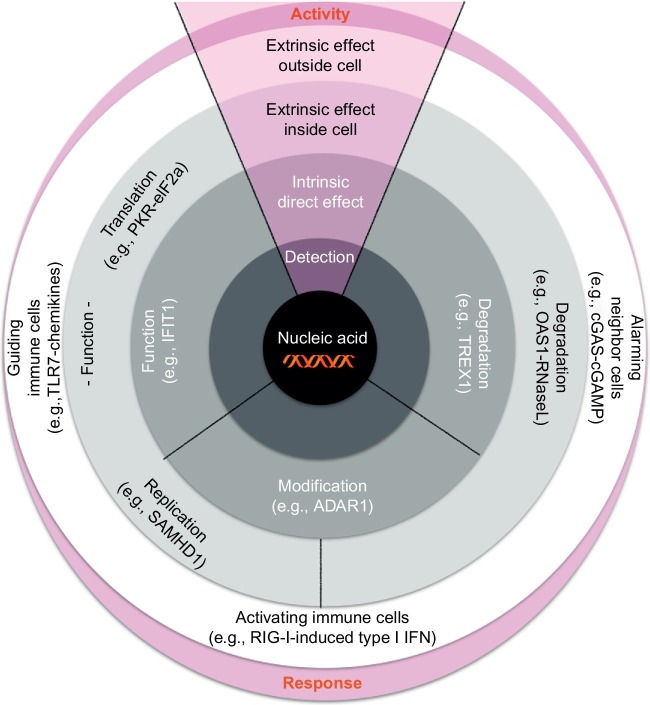Fig. 3.
Overview of functional components in nucleic acid immunity. The primary detection of specific forms of nucleic acids by highly specialized proteins is the central part of nucleic acid immunity. Upon binding of nucleic acids, the participating specialized proteins can either exert intrinsic direct effects on the nucleic acid which they have bound, or they can have indirect extrinsic effects which require the participation of additional signaling. Extrinsic effects that restrict viral replication and function can be located inside or outside cells, or both. Intrinsic direct effects include degradation or structural modification of the bound nucleic acids, or direct inhibition of translation. Extrinsic indirect effects via signaling pathways include mechanisms that restrict translation or replication, or that lead to degradation of nucleic acids. Extrinsic effects with activities beyond the infected cell include alarming neighboring cells, activating immune effector cells, and guiding immune cells to the site of infection. Together, these intrinsic and extrinsic activities represent the repertoire of nucleic acid immunity to restrict viral infection.

